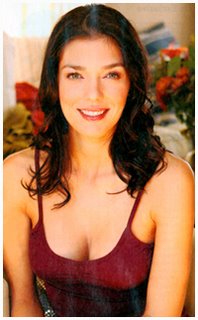Jaw Augmentation
A strong jawline (mandible) indicates strength and youth and is an attractive feature in both men and women. Some people are born with a strong jawline, but the definition is slowly lost over time as the aging process takes over. Other people were born with a relatively weak jawline that just tends to get weaker over time. The demarcation between the face an the neck is increasingly obscured as the skin loses its elasticity and as the jowls begin to form.
There are three main areas where the jaw may need augmenting:
1. The angle of the mandible, where the mandible angles sharply below the earlobe;
2. The body of the mandible, midway between the angle and the chin; and,
3. The area between the chin and the jowl, a depression known as the labiomandibular groove.
In the past, mandibular implants were really the only option out there for mandibular augmentation. These implants, usually made of solid silicone rubber, were placed through an incision in the mouth. The implants were often somewhat difficult to position properly and the implants tended to shift with mouth movements such as chewing in some people.
For the past several years, my procedure of choice for augmenting the mandible is fat grafting. Fat grafting is quick and easy and works quite well for this purpose. I usually tell my patients that they may need more than one fat grafting session, but many patients seem to get great results with just one session.
Another filler that I have used quite a bit is Radiesse. Since Radiesse can tend to lump if placed in areas of thin skin (like the nasojugal grooves of the lower eyelid), I use it exclusively in areas where there is a fair amount of soft tissue coverage, such as the mandible . It seems to last a year or more in these areas.
With the recent FDA approval of Arte-Fill, I have been using Arte-Fill more and more for mandibular augmentation. Last week, I placed a few syringes of Arte-Fill into a male patient's mandibular angle and the results were dramatic. Instantly, he looked more masculine, more handsome and more youthful. Pretty powerful stuff!
The only anesthesia required for mandibular augmentation is numbing cream on the skin. The procedure takes ten minutes and the patients walk out with immediate results. Typically, patients note that that their jaws are slightly sore for a few days, especially when chewing.
The evolution from a surgical procedure (mandibular implants) to a more minor surgical procedure (fat grafting) to a non-surgical procedure mirrors the overall trend in cosmetic surgery: more and more is being done with fillers and other noninvasive methods.
There are three main areas where the jaw may need augmenting:
1. The angle of the mandible, where the mandible angles sharply below the earlobe;
2. The body of the mandible, midway between the angle and the chin; and,
3. The area between the chin and the jowl, a depression known as the labiomandibular groove.
In the past, mandibular implants were really the only option out there for mandibular augmentation. These implants, usually made of solid silicone rubber, were placed through an incision in the mouth. The implants were often somewhat difficult to position properly and the implants tended to shift with mouth movements such as chewing in some people.
For the past several years, my procedure of choice for augmenting the mandible is fat grafting. Fat grafting is quick and easy and works quite well for this purpose. I usually tell my patients that they may need more than one fat grafting session, but many patients seem to get great results with just one session.
Another filler that I have used quite a bit is Radiesse. Since Radiesse can tend to lump if placed in areas of thin skin (like the nasojugal grooves of the lower eyelid), I use it exclusively in areas where there is a fair amount of soft tissue coverage, such as the mandible . It seems to last a year or more in these areas.
With the recent FDA approval of Arte-Fill, I have been using Arte-Fill more and more for mandibular augmentation. Last week, I placed a few syringes of Arte-Fill into a male patient's mandibular angle and the results were dramatic. Instantly, he looked more masculine, more handsome and more youthful. Pretty powerful stuff!
The only anesthesia required for mandibular augmentation is numbing cream on the skin. The procedure takes ten minutes and the patients walk out with immediate results. Typically, patients note that that their jaws are slightly sore for a few days, especially when chewing.
The evolution from a surgical procedure (mandibular implants) to a more minor surgical procedure (fat grafting) to a non-surgical procedure mirrors the overall trend in cosmetic surgery: more and more is being done with fillers and other noninvasive methods.


